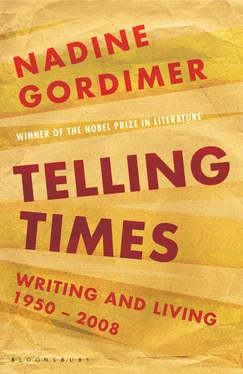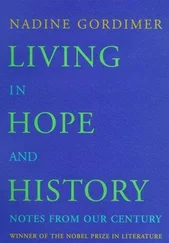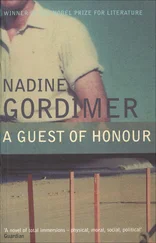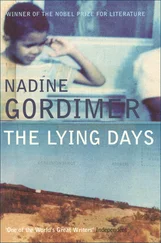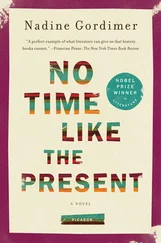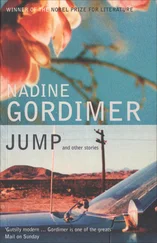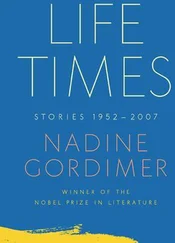Hassan heard the two names, guessed of what we were speaking and smiled, his plump man’s breasts lifting against his old shirt with a shrug. I noticed that the carpenter doodled, though leisurely, not nervously, with his little bits of wood: making and pulling apart patterns he did not even look at.
From here to there.
Hassan walked with us, respectfully, out into the courtyard. He and Wally joked together in Arabic, conspiratorially. Hassan giggled deep in his chest. ‘Is that his car?’ my husband asked Wally, looking at the grey Peugeot. Hassan put an arm on it, leaning upon it as on an old wife. ‘How do you get it in here, for heaven’s sake?’ my husband said to him in English. I do not know whether or not the carpenter understood; he raised his big curved brows, laughing, in a kind of pantomime of one of Wally’s favourite answers: ‘We have our methods.’ As we left, waving to Hassan, I looked up round the courtyard once more, and noticed a shirt fluttering at a window. In what perhaps had once been the servants’ quarters of the palace, on the street side of the courtyard, a room was still standing, a room with a roof. Whatever inner communication to it there had been was no longer there; it was reached by a wooden ladder. It was in that room that Hassan lived, perhaps with his whole family. But he had his Peugeot. He merely camped out in the eighteenth century.
I wonder if we ever really believed in the mosque in Washington.
We were in New York in April and decided to spend the Easter weekend in Washington. ‘Ah, the cherry blossom,’ friends said, knowingly. ‘Well, the National Gallery, actually,’ said my husband. ‘And we must remember to ask about the mosque,’ I murmured, but nobody heard me.
It was only late on our last afternoon in the capital that we remembered, or rather that we didn’t think of something else we must see, instead. We had been to the White House and the Lincoln Memorial, and out along the smooth parkway to Mount Vernon. I had had my picture taken against the wisteria in front of the National Gallery, and again before an espaliered pear tree in Washington’s delightful kitchen garden. (The cherry blossom had been out, it appeared, the week before, and was as bedraggled and stained as an old ball dress.) A gentle rain steamed the grass and trees of the public gardens and boulevards all day, and over all the lovely city there was the wan, soft atmosphere of a hothouse, the smell of warmth and water. We had to take a friend home to his house in a fairly distant suburb, and by the time we set out to find the mosque, it was near twilight.
‘I think we should get on straight back to New York,’ said my husband.
‘No, I’m going to see that mosque.’
We found it, of course, on Massachusetts Avenue, along the wide way lined with foreign embassies. It is part of the new Islamic Centre, built by the countries belonging to the Arab League, and is contiguous with lecture and other public rooms. When we saw it, it was near completion, though the builder’s and architect’s boards were still up. We sat and looked at it, from the car on the other side of the road. Close to the sidewalk, five pillared archways lead to the courtyard of the mosque, flanked by arched keyhole windows repeating the pattern in the secular rooms to left and right. The building, of pale stone, is two storeys high and ends in a silhouetted balustrade of a delicate design, almost exactly like that of the Doge’s Palace in Venice. Tiered above this, there is a broad square tower, with the same decoration, and from the front wall of the broad tower rises a slender square tower culminating in a kind of balcony from which the minaret points. Near its peak, the minaret has its own round balcony, above which it is nipped into a slender waist; from this the graceful onion-shaped peak curves out and then in again. The crescent of Islam balances on its tip. There in the misty twilight, with the street lights superimposing, like scratches on a picture, the trees and buds of spring on an American sidewalk, was Wally’s mosque.
We scrambled out of the car and scuttled recklessly across the avenue over the shivering lanes of light from the great eyes of American cars. The earth between the sidewalk and the entrance to the Islamic Centre was uneven with rubble; new rubble, builder’s rubble, this time, adulterating the spring smell of wet soil with the cold odour of cement. We went through one of the five pillared archways into the courtyard. But it was not yet paved, and we had to skirt wide pools of rainwater in order to cross it. It was in the process of being decorated in a bright, light blue. The way into the mosque was barred with builder’s boards. We could not even see in.
We came out of the courtyard and walked all round the Islamic Centre. All doors were locked. ‘Look,’ said my husband. He had noticed that the elaborate keyhole windows were filled in with modern steel, glass-paned frames. The steel was painted blue. Inside, I could picture lecture rooms, planned for acoustic perfection, washrooms with clean tiles and a machine that dries your hands with a stream of hygienic, warmed and disinfected air. We came out on the other side of the building and found ourselves at the right-hand entrance to the courtyard. I stepped into it once more, for a last look. Here, the builders must have settled themselves for their lunch — empty beer cans lay at the foot of one of the arches. ‘The beer that made Milwaukee famous,’ I read, kicking over one of the cans.
As we drove away, I screwed my neck round to have a last look at the brand-new mosque to which Wally’s prefabricated pulpit was coming. In a few moments all I could see of it was the Islamic crescent, caught in the treetops of Washington like the moon itself.
1955
The friend who had come to meet me at the airport said with satisfaction, ‘It’s worse than ever here, it’s lovely.’ He was a foreigner, expressing in seven words a viewpoint doubly foreign: no citizen of the United Arab Republic would admit that graft is thriving in Egypt more rankly than ever, and no other member of the remnant of the foreign community whom I met would agree that life there is lovely. Yet the eccentric viewpoint given by my friend, who has spent the whole middle thirty years of his life in Egypt, is less than half a joke. Perhaps you have to come, as I do, from Africa and not from Europe, to pick the truth from the laugh. All over the Afro-Asian world there must be isolated Europeans who secretly rejoice in the bitterness of their own banishment, because they love the life and temperament of the country of their adoption so much and so tolerantly that they luxuriate even in the intensification of national failings that so often seems to follow on independence of foreign domination.
I was last in Cairo nearly five years ago, in March 1954, during the week when Nasser deposed Neguib. There were machine guns snouting at you through the dusty leaves of the shrubs in the Ezbekieh Gardens, then, and military trucks delivered their loads of soldiers at the street corners every morning, where they sipped coffee on the alert, all day. Now the impromptu, trigger-happy atmosphere has gone. Suez hangs in the air, a confidence that inflates even the meanest street-urchin chest. Nasser has had the good sense and the imagination to do one or two things that show: a beautiful corniche has swept away the jumble of little villas that used to obscure the town bank of the Nile, there are new bridges, and new wide roads, and white blocks of newly built workers’ flats that, spaced on their cleared ground, look as much like institutions as all workers’ flats seem to everywhere in the world. One of the new roads, which leads up to the Mokattam hills, cuts a wide tarred swathe through the Dead City, and in another part of the city the great dunes of rubble that are ancient Cairo, crumbled to dust, are being bitten into and smoothed to a new level for the dwelling places of the latest wave of civilisation. (Watching the cranes and bulldozers, you can see an archaeological discovery of the future in the actual making.) All this, along with the colossus that has been raised from the sands of Memphis and put up outside the main railway station, and the boyishly-grinning pictures of Nasser that cover the faded squares where once Farouk’s picture hung on the walls of shops, is the maquillage on an old face that has known so many. But it’s an impressive job, and one which encourages one to believe that there’s been some bone-surgery too, some improvement of the structure beneath the paint.
Читать дальше
